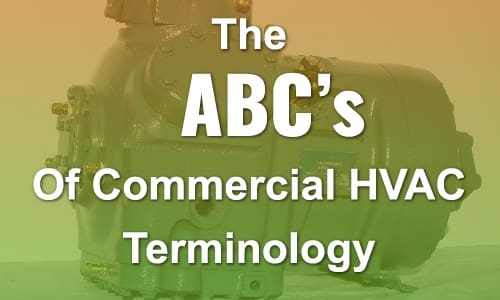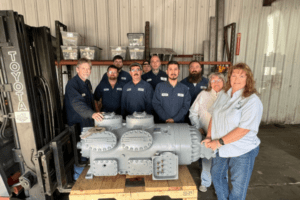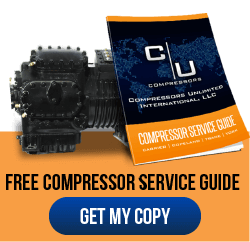Most industries use different technical terms that can cause a lot of confusion. The HVAC sector is no exception. It is for this reason it can be difficult to understand what an HVAC technician is talking about when he comes to perform repairs or maintenance operations on an HVAC system.
The Most Commonly Used HVAC Terms
Because it helps to be familiar with HVAC terminology when speaking with industry professionals, here is a brief description of the most commonly used HVAC terms.
HVAC/R
HVAC/R stands for “heating, ventilation, air conditioning, and refrigeration” and represents a sub-discipline of mechanical engineering whose goal is to balance indoor environmental comfort with energy efficiency and ease of maintenance.
BTU
The British Thermal Unit, or BTU, indicates the energy required by heating equipment to raise the temperature of one pound of water by one degree Fahrenheit.
EER
EER is an acronym for Energy Efficiency Ratio and defines the ratio between the output cooling energy and input electrical energy at a given outdoor temperature level (95°F). For the same cooling output, an HVAC system with a high EER rating is more energy efficient than a system with a lower rating.
SEER
The Seasonal Energy Efficiency Ratio, or SEER, indicates the relative amount of energy required by central cooling systems to provide specific cooling output values, over the course of a typical cooling season. The higher a system’s SEER rating, the more energy efficient it is.
Zoning
When it comes to commercial HVAC terminology, “zoning” is another term that business professionals come across quite often. “Zoning” involves the use of different devices, such as programmable thermostats, sensors, and “dampers”, in order to control when and where the cooling and heating occurs in a building. Installed in ductwork, a “damper” is a type of valve that opens or closes to control the airflow.
Central Heating and Cooling
An HVAC unit contains two separate cooling and heating systems that are centralized. Both systems use a series of fans and air ducts to evenly distribute heated or cooled air throughout temperature-controlled facilities.
Heat Exchanger
Located inside the heating system, the heat exchanger draws in fresh air from outside or from inside the building, heats it rapidly, and blows it out through the ductwork into the building.
Compressor
The main function of a compressor is to circulate the refrigerant through a closed circuit and raise its pressure. Since the compressor makes the cooling process possible, it plays a critical role in an HVAC system.
When talking about commercial HVAC compressors, a technician may use specific HVAC terminology, such as:
- Evaporator – The evaporator is designed to initiate the cooling process by changing the liquid refrigerant into a hot, high-pressure gas.
- Condenser – The high-pressure, high-temperature refrigerant enters the condenser, which releases the heat collected to the cooler outside air.
- Coils – While the evaporator coil absorbs heat from the surrounding environment, the condenser coil facilitates the removal of heat from the vapor refrigerant.
- Refrigerant – The refrigerant is a substance commonly used in different HVAC systems to transfer the heat.
- Expansion valve – An expansion valve has a temperature- or pressure-controlled orifice to reduce the pressure on liquid refrigerants.
- Drain line and pan – Also referred to as condensate line and pan, drain line and pan are used to collect condensate that can result from the cooling process.
- Ductwork – The ductwork consists of a network of air ducts that carry heated or cooled air to various parts of a building. Some applications also include a return duct system, which brings the air back to the HVAC system to be cooled or heated again.
- Remanufactured compressor – A remanufactured compressor is a compressor that has been completely remanufactured to the latest specifications and tested to the standards of a brand new compressor. To learn more about our compressor remanufacturing process, please visit our ‘why remanufactured‘ page.
At Compressors Unlimited, we specialize in different areas of the HVAC/R industry. As we are willing to put all of our knowledge and experience to work for you, please contact us today with any questions you may have about your HVAC system, refrigerator, or compressor.












